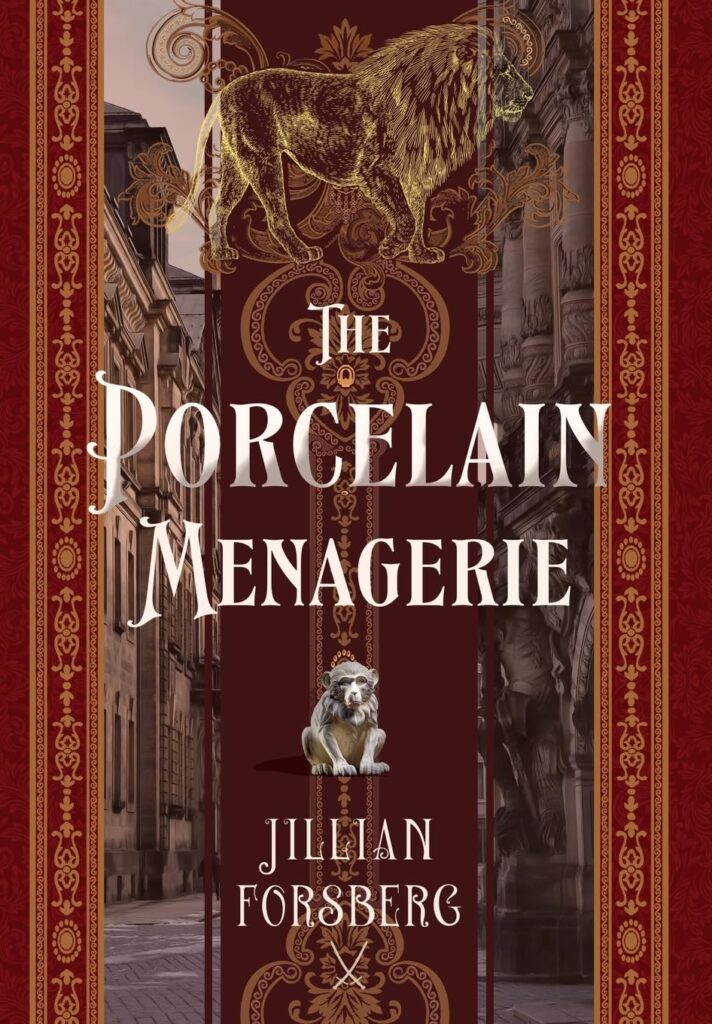Newsletters
Q&A With Jillian Forsberg
New Information about Upcoming Book Related News
Behind The Book With Jillian Forsberg
Jillian Forsberg has once again enchanted readers with her second historical fiction novel The Porcelain Menagerie! I’m grateful to get to read a copy of the novel and I’m even more grateful to do an interview with Jillian again discussing her research & writing process! The Porcelaine Menagerie came out last month and is available to read now wherever you get your books!
Q: Welcome back to Book Notions Jillian! For those who haven’t read The Porcelain Menagerie, would you like to give a brief description of the novel?
A: The Porcelain Menagerie is the story of two people below a mad king and their attempts to make their own lives better. In 18th century Europe, royalty was obsessed with getting the latest thing, and in this book, that royal was Augustus the Strong. And what he wanted was people and porcelain.
Q: Was writing your second novel easier or harder in someways than writing your first novel? Why or why not?
A: It was a mixed bag! I had already done a lot of research on porcelain, Augustus, and Johann Kaendler, the porcelain maker, for my first novel The Rhino Keeper.
There’s an overlapping chapter and characters, which was a total delight. But this book is deeper, a tougher read, a harder subject to write about. In some ways it felt easy because I’d already lived in my main character’s mind for a little bit, but the emotional toll of this one was profound.
Q: At any point did you find yourself going down a research rabbit hole while writing The Porcelain Menagerie?
A: Oh gosh of course! It’s hard not to go down rabbit holes about art and treasure. Augustus had one of the largest treasure collections in Europe and I scoured the archives looking for things I could simply mention in the book.
If you look up Dresden’s green vault, you’ll see why I had a hard time deciding about one or two pieces to mention. I could have spent all 90k words describing his collection.
The other, sadder, rabbit hole was Fatima Kariman. Fatima was one of Augustus’s many mistresses. He left her $8000 Thaler in his will, she had two of his children, and yet… there is so little known about her. So that was more of a blockage than a research glut.
Q: Which scenes did you enjoy writing about in The Porcelain Menagerie? It’s hard for me to choose one particular scene. I enjoyed the descriptions of the porcelain, the animals, seeing how both of your book’s tie in together and learning about history that I didn’t know existed. I had no idea there was a king named Augustus The Strong, or how I would rather call him Augustus The Mad.
A: I actually enjoyed the early scenes with Johann and his brother, and later with Johann and Hao. This book is very much about relationships and what we do to protect those we love.
Of course, writing an 18th century menagerie was a true delight. I didn’t particularly enjoy writing about Augustus, but I suppose I’d be mad myself if I did!
Q: I know in the authors note you wrote he died of debauchery and drunkenness. Do you think someone could have the potential to cause his demise faster because he was hated?
A: He was in very poor health – his descriptions often included what I assume were symptoms of diabetes, gout, and perhaps Syphilis.
But the thing about him is that he didn’t do anything of particular note to cause anyone to want to ruin him politically. Personally? Oh yes. There’s a long list of people he’d wronged: his wife and legitimate son, his mistresses, his brother and brother’s mistresses, his bastard children, the many workers he had fired… the list goes on.
But there’s no proof. And that’s why I love fiction.
Q: What do you hope readers learn and feel after they finish The Porcelain Menagerie?
A: I hope they feel mad. Truly. That someone could have such power they took what they wanted even if it was the souls of other people?! I despise that kind of behavior and hope we can all learn from it.
I also hope they seek out art and see the person who made it as well as the legacy that still exists because that artist was brave enough to try.
After all, if we’re only here for a short time, we can choose how we are remembered by the small things we do for others. Those things echo into the future, and hopefully we choose kind actions that mean when fiction writers look back on us in 300 years, we will be remembered as a person who did good.


